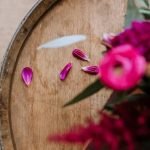Looking for fake grass ideas for small gardens? Transforming your compact outdoor space with artificial turf can bring numerous benefits and elevate the look of your garden. From easy maintenance to year-round greenery, fake grass offers a practical solution for small garden owners looking to enhance their outdoor oasis.
Artificial grass has become increasingly popular among homeowners with limited outdoor space, as it provides a low-maintenance alternative to traditional lawn care. With the right type of fake grass and a well-designed layout, you can create a stunning and functional garden area that maximizes every inch of space.
In this article, we will explore the various benefits of using fake grass in small gardens, including tips on choosing the right type of artificial turf, designing your garden layout, maintenance advice, landscaping ideas, creative decor options, environmental considerations, and real-life success stories. Whether you’re looking to create an outdoor play area or simply want to enjoy a lush green space without the hassle of upkeep, fake grass could be the perfect solution for your small garden needs.
Choosing the Right Type of Fake Grass for Your Small Garden
When it comes to choosing the right type of fake grass for your small garden, there are a few important factors to consider. First and foremost, you’ll want to think about the specific needs of your garden, including how much sunlight it receives and how much foot traffic it typically experiences. Additionally, you’ll want to take into account the overall aesthetic you’re going for and any budget constraints you may have.
One key consideration when choosing fake grass for a small garden is the pile height. Pile height refers to the length of the individual blades of grass, and it can have a big impact on the overall look and feel of your garden. For small gardens, shorter pile heights are often recommended, as they can help create a more natural appearance and are easier to maintain.
Another important factor to consider is the quality of the artificial turf. Not all fake grass is created equal, so it’s important to do your research and choose a high-quality product that will look great and stand up to the demands of your small garden. Look for turf that is UV stabilized to resist fading, as well as one that has good drainage properties to prevent waterlogging in your garden.
Finally, consider any additional features that may be important for your small garden. This could include things like built-in weed barriers or extra padding for added comfort if you plan on using your garden for recreational purposes.
| Consideration | Recommendation |
|---|---|
| Pile Height | Choose shorter pile heights for a natural appearance |
| Quality | Select high-quality UV stabilized turf with good drainage properties |
| Additional Features | Consider built-in weed barriers or extra padding if needed |
Designing Your Small Garden Layout With Fake Grass
Choosing the Right Placement
When designing your small garden layout with fake grass, it’s important to consider the placement of the artificial turf. Since you have limited space, think about where the grass will have the most impact. Consider creating a small lawn area in the center of your garden or along one side to serve as a focal point.
Creating Pathways
Incorporate pathways made of fake grass into your garden design to add visual interest and create a sense of spaciousness. These pathways can lead to different areas of your garden, such as seating areas or flower beds, and can make your small garden feel larger than it actually is.
Adding Vertical Elements
To maximize space in a small garden, consider adding vertical elements such as trellises, hanging planters, or wall-mounted gardens. In these areas where real grass may not thrive, using fake grass can help create a green backdrop for climbing plants and add texture to your garden’s design.
By carefully considering the placement of fake grass in your small garden and incorporating pathways and vertical elements, you can create an attractive and functional outdoor space that makes the most of limited square footage.
Maintenance Tips for Fake Grass in Small Gardens
Once you have installed fake grass in your small garden, it is important to properly maintain it to ensure its longevity and aesthetic appeal. Despite being low-maintenance compared to natural grass, fake grass still requires care to keep it looking fresh and vibrant. Here are some maintenance tips for fake grass in small gardens:
- Regular Cleaning: Keep your fake grass clean by regularly sweeping away debris such as leaves, twigs, and dirt. You can also use a leaf blower or a stiff brush to remove any buildup of debris that could affect the appearance of the grass.
- Watering: While one of the benefits of fake grass is that it does not require watering like natural grass, it is still a good idea to occasionally hose down your artificial turf to remove dust and refresh its appearance. This can help prevent any unpleasant odors from developing over time.
- Proper Brushing: To keep your fake grass looking lush and natural, occasionally brush the fibers with a stiff-bristled brush. This will help prevent matting and keep the blades standing upright, maintaining a realistic appearance.
By following these maintenance tips, you can ensure that your fake grass remains in top condition, providing a beautiful and durable surface for your small garden.
| Maintenance Tips | Description |
|---|---|
| Regular Cleaning | Remove debris such as leaves and dirt regularly with a broom or leaf blower |
| Watering | Occasionally hose down the artificial turf to remove dust and refresh its appearance |
| Proper Brushing | Use a stiff-bristled brush to prevent matting and keep the blades standing upright |
Incorporating Fake Grass Into a Small Garden Landscaping Plan
Creating Artificial Turf Pathways
One popular way to incorporate fake grass into a small garden landscaping plan is by creating pathways or stepping stones using artificial turf. This not only adds visual interest to your garden but also helps to define walking areas and prevent wear and tear on natural grass or soil. You can choose different shades of artificial turf to create unique designs and patterns for your pathways, adding a playful and whimsical touch to your garden.
Artificial Turf as Ground Cover
In smaller gardens where natural grass may struggle to thrive due to limited sunlight or space, using fake grass as ground cover can be an effective solution. By covering specific areas with artificial turf, you can create defined patches of greenery that require minimal maintenance. This approach also allows for more flexibility in designing your garden layout, as you can use artificial turf to create visually appealing sections and borders within the space.
Vertical Gardens With Artificial Turf
For small gardens with limited ground space, consider incorporating vertical gardens with artificial turf into your landscaping plan. By attaching artificial turf panels or pockets to walls or fencing, you can introduce greenery and texture without taking up valuable floor space. Vertical gardens with fake grass are not only visually striking but also offer a practical solution for maximizing greenery in compact outdoor areas.
Incorporating fake grass into a small garden landscaping plan opens up countless possibilities for enhancing the visual appeal and functionality of your outdoor space. With thoughtful design and strategic placement, artificial turf can provide the lushness of natural grass while offering durability and low maintenance benefits for small gardens.
Creative Ways to Use Fake Grass in Small Garden Decor
One of the most creative ways to use fake grass in small garden decor is by incorporating it into the design of a vertical garden. Vertical gardens are perfect for small spaces and can be a beautiful addition to any small garden.
By using fake grass as the backdrop for your vertical garden, you can create a lush, vibrant backdrop that will make your plants stand out even more. Whether you choose to use a living wall system or simply attach pots to the faux grass surface, this is an innovative way to incorporate artificial turf into your garden decor.
Another great idea for using fake grass in small garden decor is to create a cozy seating area with a faux grass rug. Adding a touch of greenery underfoot can help to create an inviting and relaxing atmosphere in your small outdoor space. You can also add some colorful throw pillows and outdoor furniture to complete the look. Additionally, using artificial turf as a rug is practical since it requires minimal maintenance compared to natural grass.
Additionally, you can get creative with fake grass by using it as an accent in your garden decor. For example, you could create a fun pathway with stepping stones surrounded by faux grass, or use it to highlight certain areas of your garden such as around a water feature or decorative sculpture. This adds visual interest and texture to your small garden while requiring little upkeep.
When considering fake grass ideas for small gardens, it’s important to remember that there are many creative ways to incorporate this low-maintenance option into your outdoor decor. Whether you’re looking for ways to integrate artificial turf into vertical gardens, seating areas, or as accents throughout the space, you’ll find plenty of opportunities to enhance the beauty and functionality of your small garden with fake grass.
The Environmental Impact of Fake Grass in Small Gardens
Fake grass, also known as artificial turf, offers a low-maintenance and visually appealing alternative to natural grass for small gardens. While it may seem like a great solution for those looking to save time and water, there are some environmental considerations to take into account when opting for fake grass in your small garden.
One of the main environmental impacts of fake grass is its lack of natural processes such as oxygen production and carbon dioxide capture, which are important factors in reducing greenhouse gas emissions. Additionally, the production and disposal of fake grass can contribute to pollution and waste. However, there are some environmentally friendly options available that use recyclable materials and sustainable manufacturing processes.
To make a more informed decision about the environmental impact of using fake grass in your small garden, here are some key points to consider:
- Choose eco-friendly fake grass options made from recycled materials
- Properly dispose of old or worn-out fake grass by recycling or repurposing it
- Consider the overall environmental benefits such as water conservation and reduced pesticide use
When incorporating fake grass into your small garden design, be mindful of its potential impact on the local ecosystem. By choosing environmentally responsible options and properly maintaining your fake grass, you can minimize its negative effects on the environment while still enjoying the benefits it provides for your small garden.
Real-Life Examples and Success Stories of Using Fake Grass in Small Gardens
In conclusion, fake grass can be a game-changer for small gardens, offering numerous benefits and creative design options. The versatility of fake grass makes it a great alternative to natural grass for those with limited outdoor space. From its low maintenance requirements to its customizable design possibilities, fake grass is a practical and aesthetically pleasing option for small garden owners.
Many homeowners have found success in incorporating fake grass into their small garden landscapes. By choosing the right type of fake grass and carefully designing the layout, they have been able to create beautiful and functional outdoor spaces. Whether it’s creating a cozy play area for children or designing a tranquil retreat for relaxation, fake grass offers endless possibilities.
Additionally, the environmental impact of using fake grass in small gardens is worth considering. While some may argue that natural grass is more eco-friendly, advances in technology have made fake grass a greener option than ever before.
With proper installation and maintenance practices, fake grass can be an environmentally responsible choice for small garden landscaping. Overall, the real-life examples and success stories of using fake grass in small gardens are proof that this synthetic alternative has the potential to transform any outdoor space into a stunning oasis.
Frequently Asked Questions
What Do You Put Under Fake Grass?
Under fake grass, it is recommended to put a layer of compacted gravel or sand as a base to ensure proper drainage and stability. This base layer helps prevent the artificial turf from shifting or sinking over time.
How Do You Make Artificial Grass Stay in Place?
To make artificial grass stay in place, you can use adhesive glues specially designed for this purpose. Additionally, using landscape staples or nails around the perimeter of the synthetic turf can help secure it in place and prevent movement.
What Is the Cheapest Way to Lay Artificial Grass?
The cheapest way to lay artificial grass is to do it yourself rather than hiring professionals for installation. By carefully preparing the area, sourcing affordable materials, and following installation guidance from reliable sources, you can save significantly on costs while still achieving a satisfactory result.

Welcome to my gardening blog! I am passionate about plants and enjoy sharing my knowledge and experiences with others. In this blog, I will write about everything related to gardening, from tips on how to get started to updates on my own garden projects.





